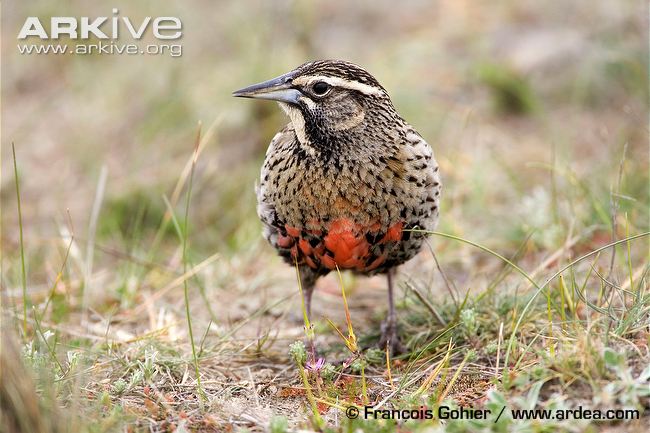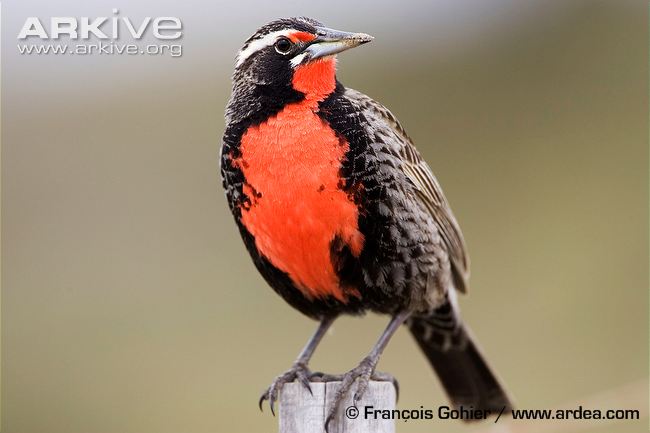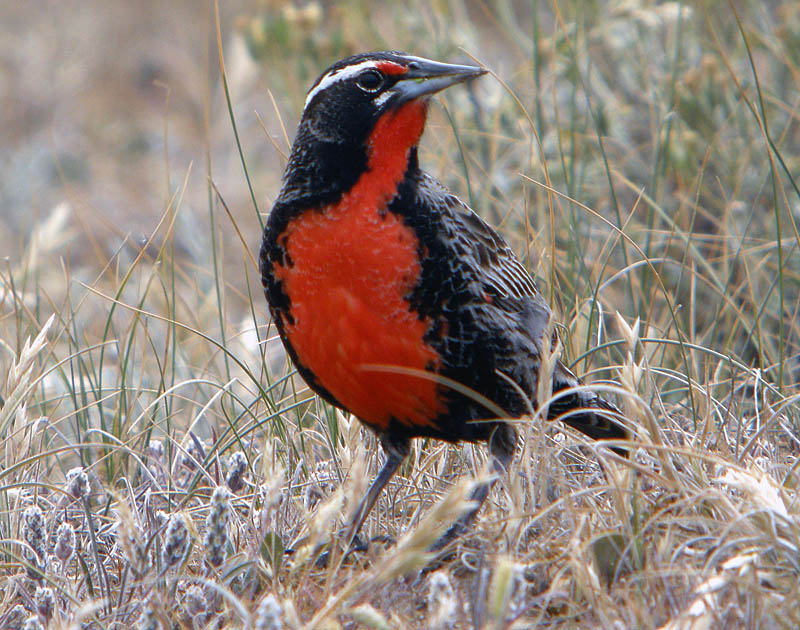
Sturnella loyca
TAXONOMY
Trupialis loyca Bonaparte, 1851, Peru. At present, four geographically
discrete forms are recognized.
OTHER COMMON NAMES
French: Sturnelle australe; German: Langschwanz-Soldatenstдrling;
Spanish: Loica Comъn.
PHYSICAL CHARACTERISTICS
9.5–10 in (24–25.5 cm); 4 oz (113 g). The sexes are similar in
color, but the females are somewhat duller. The throat, breast,
and belly are red, and there is a dash of red from above the eye
to the bill. There is a white line running from the top of the
eye back to the nape.
DISTRIBUTION
Resident in western South America from central Chile and in
foothills and intermontane valleys in western Argentina, and in
the steppes of central Argentina south to Tierra del Fuego and
the Falkland Islands. Some Chilean and Patagonian birds move
northward in winter.
HABITAT
Arid grassy areas with scattered shrubs; pastures and cultivated
fields.
BEHAVIOR
Territorial during the breeding season. Males defend a territory
with songs and chasing; they generally sing from bushes
or trees. Long-tailed meadowlarks typically perch in trees in
flocks and behave more like many other blackbirds rather than
other meadowlarks, which characteristically spend most of their
time on the ground. In winter, solitary or found in small
groups.
FEEDING ECOLOGY AND DIET
Forage on ground where they take seeds and insects.
REPRODUCTIVE BIOLOGY
Monogamous. Nest is a domed cup placed on the ground (except
in the Falkland Islands where the nest may be above the
ground, built on a pedestal of tussock grass). Generally 3–5
eggs are laid in September–January (August–November in
Falklands). Data on incubation and fledging not available. May
be double brooded.
CONSERVATION STATUS
Not threatened. Common throughout their range.
SIGNIFICANCE TO HUMANS
None known.
Photo Gallery of - Long-tailed meadowlark




 Animalia Life
Animalia Life